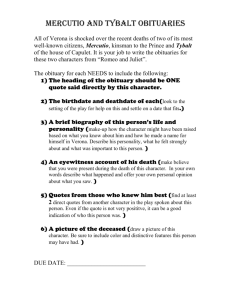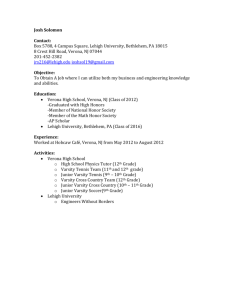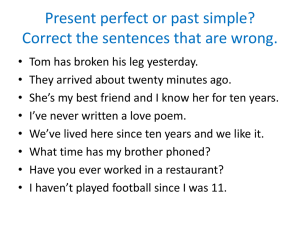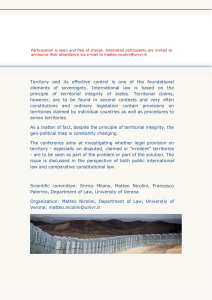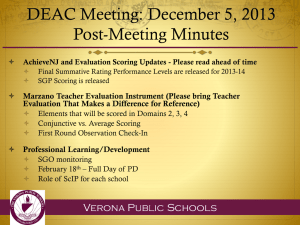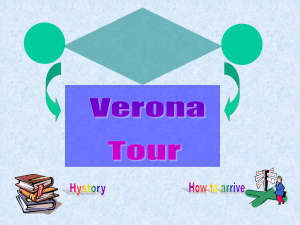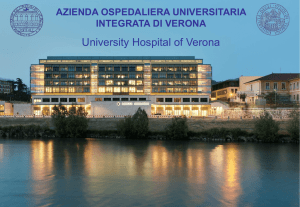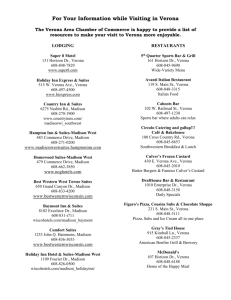roman beautiful
advertisement
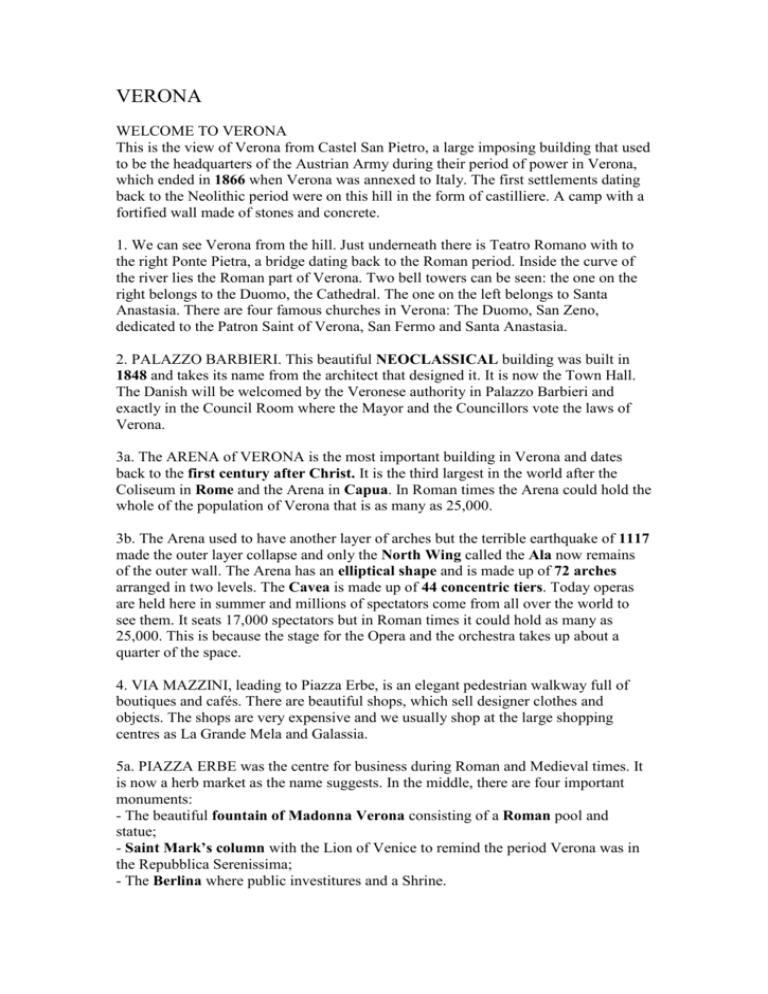
VERONA WELCOME TO VERONA This is the view of Verona from Castel San Pietro, a large imposing building that used to be the headquarters of the Austrian Army during their period of power in Verona, which ended in 1866 when Verona was annexed to Italy. The first settlements dating back to the Neolithic period were on this hill in the form of castilliere. A camp with a fortified wall made of stones and concrete. 1. We can see Verona from the hill. Just underneath there is Teatro Romano with to the right Ponte Pietra, a bridge dating back to the Roman period. Inside the curve of the river lies the Roman part of Verona. Two bell towers can be seen: the one on the right belongs to the Duomo, the Cathedral. The one on the left belongs to Santa Anastasia. There are four famous churches in Verona: The Duomo, San Zeno, dedicated to the Patron Saint of Verona, San Fermo and Santa Anastasia. 2. PALAZZO BARBIERI. This beautiful NEOCLASSICAL building was built in 1848 and takes its name from the architect that designed it. It is now the Town Hall. The Danish will be welcomed by the Veronese authority in Palazzo Barbieri and exactly in the Council Room where the Mayor and the Councillors vote the laws of Verona. 3a. The ARENA of VERONA is the most important building in Verona and dates back to the first century after Christ. It is the third largest in the world after the Coliseum in Rome and the Arena in Capua. In Roman times the Arena could hold the whole of the population of Verona that is as many as 25,000. 3b. The Arena used to have another layer of arches but the terrible earthquake of 1117 made the outer layer collapse and only the North Wing called the Ala now remains of the outer wall. The Arena has an elliptical shape and is made up of 72 arches arranged in two levels. The Cavea is made up of 44 concentric tiers. Today operas are held here in summer and millions of spectators come from all over the world to see them. It seats 17,000 spectators but in Roman times it could hold as many as 25,000. This is because the stage for the Opera and the orchestra takes up about a quarter of the space. 4. VIA MAZZINI, leading to Piazza Erbe, is an elegant pedestrian walkway full of boutiques and cafés. There are beautiful shops, which sell designer clothes and objects. The shops are very expensive and we usually shop at the large shopping centres as La Grande Mela and Galassia. 5a. PIAZZA ERBE was the centre for business during Roman and Medieval times. It is now a herb market as the name suggests. In the middle, there are four important monuments: - The beautiful fountain of Madonna Verona consisting of a Roman pool and statue; - Saint Mark’s column with the Lion of Venice to remind the period Verona was in the Repubblica Serenissima; - The Berlina where public investitures and a Shrine. 5b. Piazza Erbe is surrounded by very important places. Clockwise from the left is the Gardello Tower, which housed he oldest bell clock, then the beautiful Palazzo Maffei with statues on the top and the Case Mazzanti with beautiful allegorical frescoes and the Domus Mercatorum with the Ghibelline battlements. 6. This is the famous balcony of JULIET´S HOUSE. The story is true but was attributed to the famous families: Juliet of the Capulet and Romeo of the Montecchi who were enemies at the time. In the courtyard, there is a statue of the young heroine and it brings good luck to caress her breast. 7. TORRE DEI LAMBERTI is the highest building in Verona. We will go to the top of it either by climbing the steps or by lift and get a beautiful bird’s eye view of Verona, especially of Piazza Erbe under neath. It houses two historic bells the Rengo that used to announce council meetings and the Marangona, used to announce danger. It was rung to warn people of World War II bombings. The last time it was rung was at the funeral of two Veronese soldiers killed in Lebanon. 8. PIAZZA DEI SIGNORI was the seat of government, which contained the political and administrative buildings of the town. The important Scaligeri buildings are set here: 1. The Palazzo Cangrande house of the Scaligeri family before Castelvecchio was built; 2, The Loggia del Consiglio; 3. The Palazzo del Capitano, 4. In the middle there is the statue of Dante, the first poet to write in Italian and one of the most important and 5. The Arche Scaligere. 9. The ARCHE SCALIGERE are the tombs of the Della Scala Family. It was the most important family that ruled over Verona in the 12th and 13th Century. The Della Scala cemetery is surrounded by a magnificent wrought-iron fence and gateway incorporating their symbol the Scala (a ladder). 10. The DUOMO is the Cathedral of Verona. It was built in ROMANESQUE style. by the Benedictine friars in 1065. It was later transformed into GOTHIC style. The entrance is made up of a twin canopy, the bell tower that houses the second largest rotating bell in the world has never been completed as it did not have to be higher than the Torre dei Lamberti the political power of Verona. 11. The PONTE PIETRA is the only remaining bridge of the two Roman bridges built the 1st century After Christ. It was bombed by the Germans, like all the bridges in Verona, and was rebuilt after the war with the original stones that could be retrieved from the River Adige. 12. The Teatro ROMANO formed an imposing monumental structure that rose in tiers up to the summit of the hill. The area used to be covered by buildings, but thanks to Andrea Monga who believed there were Roman remains underneath, they were pulled down and the Roman building was found. 13. The CASTELVECCHIO castle was built by Cangrande the II Della Scala to defend the Lord of the city from popular uprising. The beautiful bridge built over the river Adige was built entirely in cotto and was devised to enable the Lord to escape in case of an attack from the Veronese people. 14. The SAN ZENO Basilica in beautiful ROMANESQUE architecture was built to hold in the vaulted crypt the tomb of Saint Zeno the patron saint of Verona. It was built between 1123 and 1135. On the High Altar is Andrea Mantegna´s triptych painted in 1457. We shall visit the church during the stay of our Danish friends. 15. The GIARDINO GIUSTI is a private garden but is open to the public. It has an Italian garden and a maze. Couples on their wedding day have photographs taken here, as it is so beautiful. 16. We will definitely visit the beautiful LAKE GARDA, the largest lake in Italy. The water mitigates the climate of the surrounding land; in fact, the mild climate makes it the northernest point in which olives are grown in the world. The most beautiful place is Sirmione and especially the Grotte di Catullo, which we will certainly visit. 17a. This is a MAP of Verona. The River Adige makes an S curve in the city. You can see where the Roman part is in the bend of the river. The area was then extended in the Scaligeri period. The four most important periods in Verona are: 1. The Roman Period - 2. The Scaligeri Period - 3. The Venetian Period and 4. The Austrian Period.
